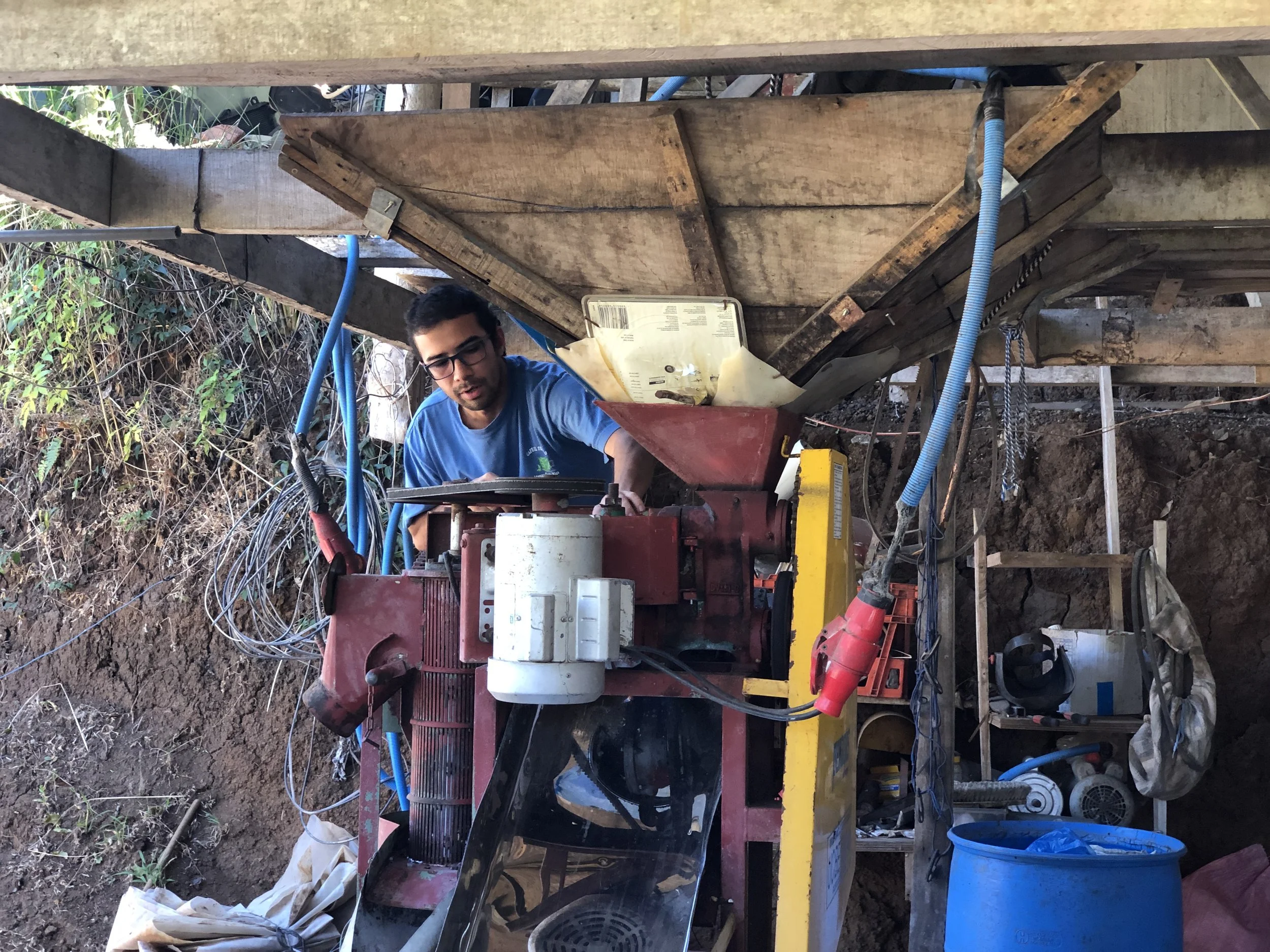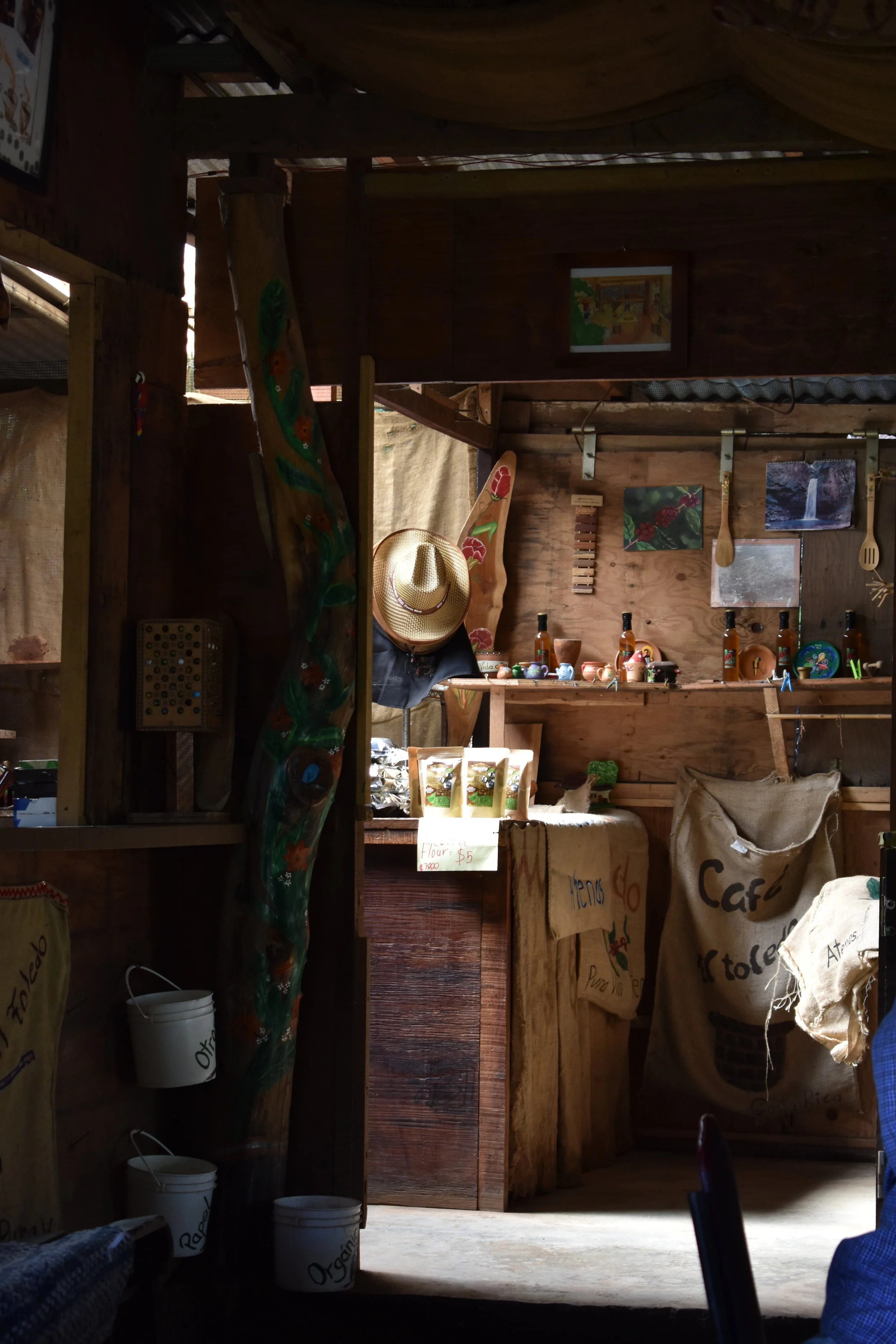Coffee, Coffee, Coffee
A family-run farm in Costa Rica
strives to use every last drop
Text and photos by Nick Slater
The taste of coffee resembles that of a blueberry and a cherry mix.
Not the ground up, dehydrated, coffee beans that are used to brew a cup of coffee. I’m talking about the coffee berries. I never would have guessed that coffee was a fruit. As it turns out, there is a lot I did not know about the coffee industry.
Gabriel Calderón, 34, is the owner and operator of Cafe El Toledo in Atenas, Costa Rica. Calderon speaks earnestly about the coffee industry, acknowledging the negatives that some farmers might not want to point out.
The Costa Rican coffee industry is a system surrounded by myths and waste, says Calderón.
There are around 25 million coffee farms worldwide, and a lot of wasted materials and inefficient processes help produce the cup of joe you drink on the way to work. Coffee is the second biggest way to make money in the world, according to Calderón.
Coffee production runs on a one year cycle. From January to March, the coffee plants are dormant. The plants bloom from April to May, during the rainy season. Then, from June to October, the plants grow. In November and December, the the coffee fruit is harvested and the cycle starts anew.
Graphic created by Nick Slater.
When coffee berries are harvested in the last months of the year, they are left out in the sun to dehydrate. Once dehydrated, the fruit is separated from the beans. The beans are then either sold as is, or are ground up into coffee.
“Coffee is a luxury, isn’t it?” Calderón said.
There are a lot of overlooked flaws of this luxury, however. Not much thinking goes into coffee as a consumer. But why would it? You put your K-cup in the Keurig and it brews in less than a minute.
The buzzing debate in all of food production nowadays is organics. Calderón stressed that just because organic coffee is available, does not mean that it is better than conventional coffee. Additionally, he said organic coffee farms are only inspected once a year, whereas conventional farms have more regular inspections.
Thirty years ago, in Costa Rica, 8 percent of coffee farming was organic. Now, that number is down to 1 percent.
Calderón said that the biggest winner in organic farming is the transportation industry. Simply enough, people will pay more for organic coffee. So, farms export their products for more money. El Toledo is an organic farm, but it is also well aware of the losses consumers and farms risk.
“Environmentalists aren’t good for farming,” Calderón said.
Consumers are deceived by the positive promotion of organic products and wind up paying more money than they would for conventional coffee, yet they consume a similar product.
Coffee farmers lose out in either case because the process of making coffee produces so much waste.
First off, 100 liters of water —just over 26 gallons —goes into making one cup of coffee. Coffee is 95 percent water, according to Caldern. At Cafe El Toledo, the farmers process their coffee with ohoney, reducing the amount of water and waste that goes into the production process.
Additionally, the separation machine that Cafe El Toledo uses to separate the beans from the fruit, saves an immense amount of water. Traditionally, coffee fruit is put in large amounts of water to separate the berries from the seeds. Afterward, what is unused, along with the water, is discarded.
By using the separation machine, and saving the berries, Calderón is able to save an enormous amount of water and make products with the berries, including coffee tea.
The machine that Cafe El Toledo uses to separate coffee berries from beans reduces the amount of waste during coffee production.
Calderón said that only 1 percent of what is produced in coffee production is consumed. That 99 percent of wasted material is in the coffee fruit and the potential products that are not made from it. The solution to reducing the waste during coffee production, Calderón says, must come from consumers and farmers working together.
“We are made of habits,” he said. “We don’t see we’re part of the problem. Sometimes our visions are narrow.”
For consumers of coffee, the habit Calderón is referring to is the unwillingness to adapt to new coffee products. For farmers, the habit is using so much water. If farmers used less water during production and the market adapted to different products made from coffee waste, the coffee industry would be much more efficient, according to Calderón.
Cafe El Toledo’s approach to farming is to be efficient and transparent. Calderón says his farm makes money where other farms lose out because it utilizes waste.
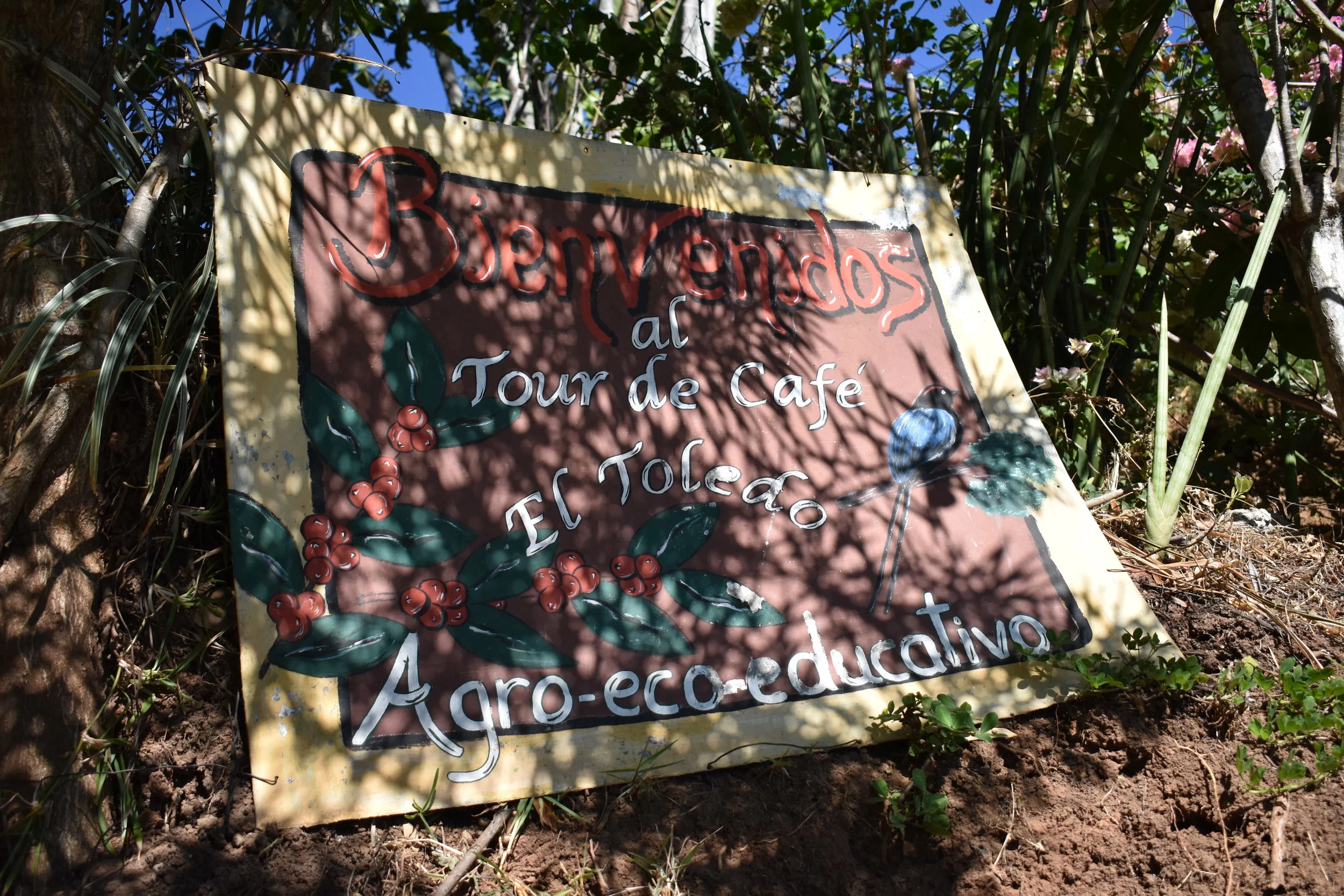
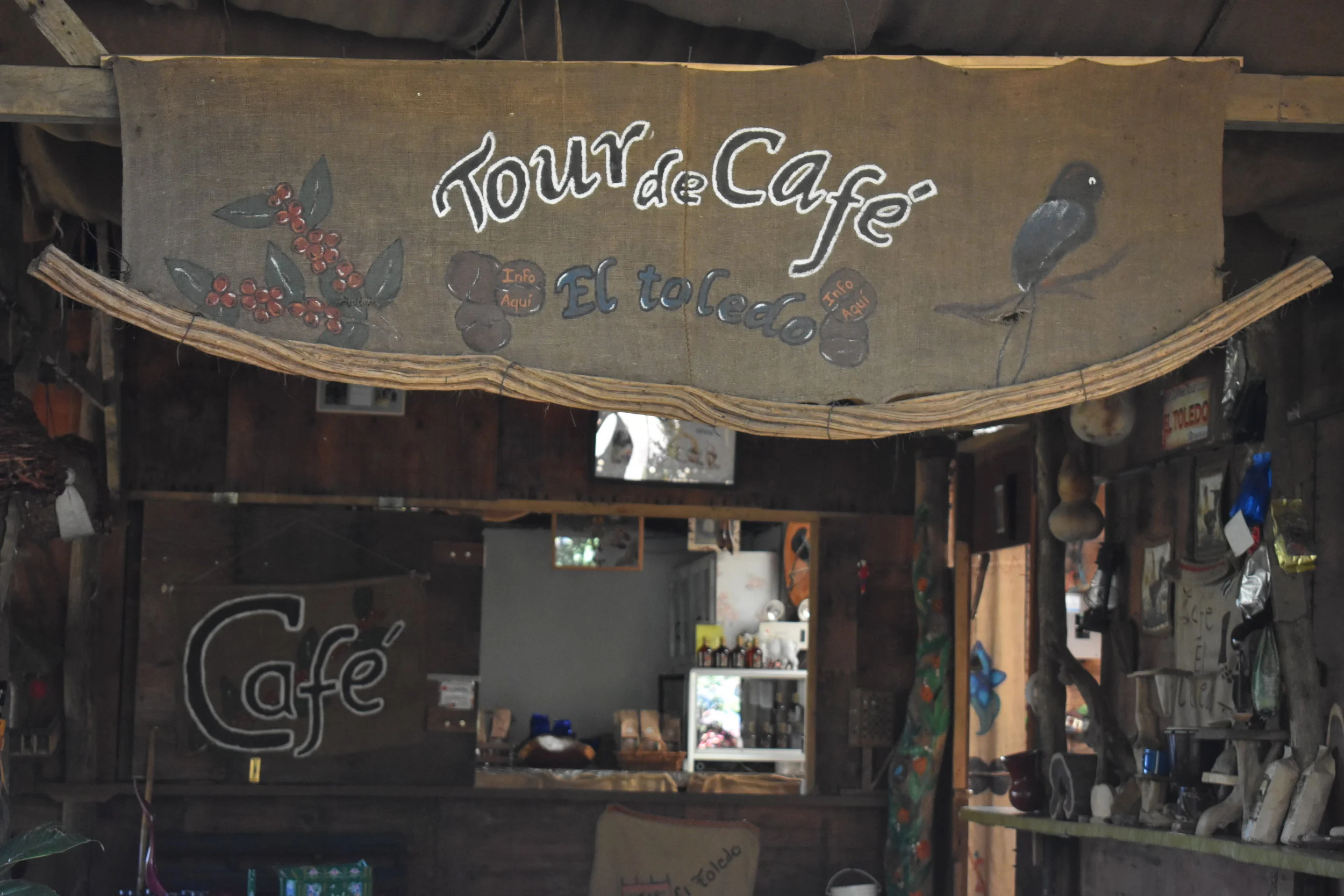
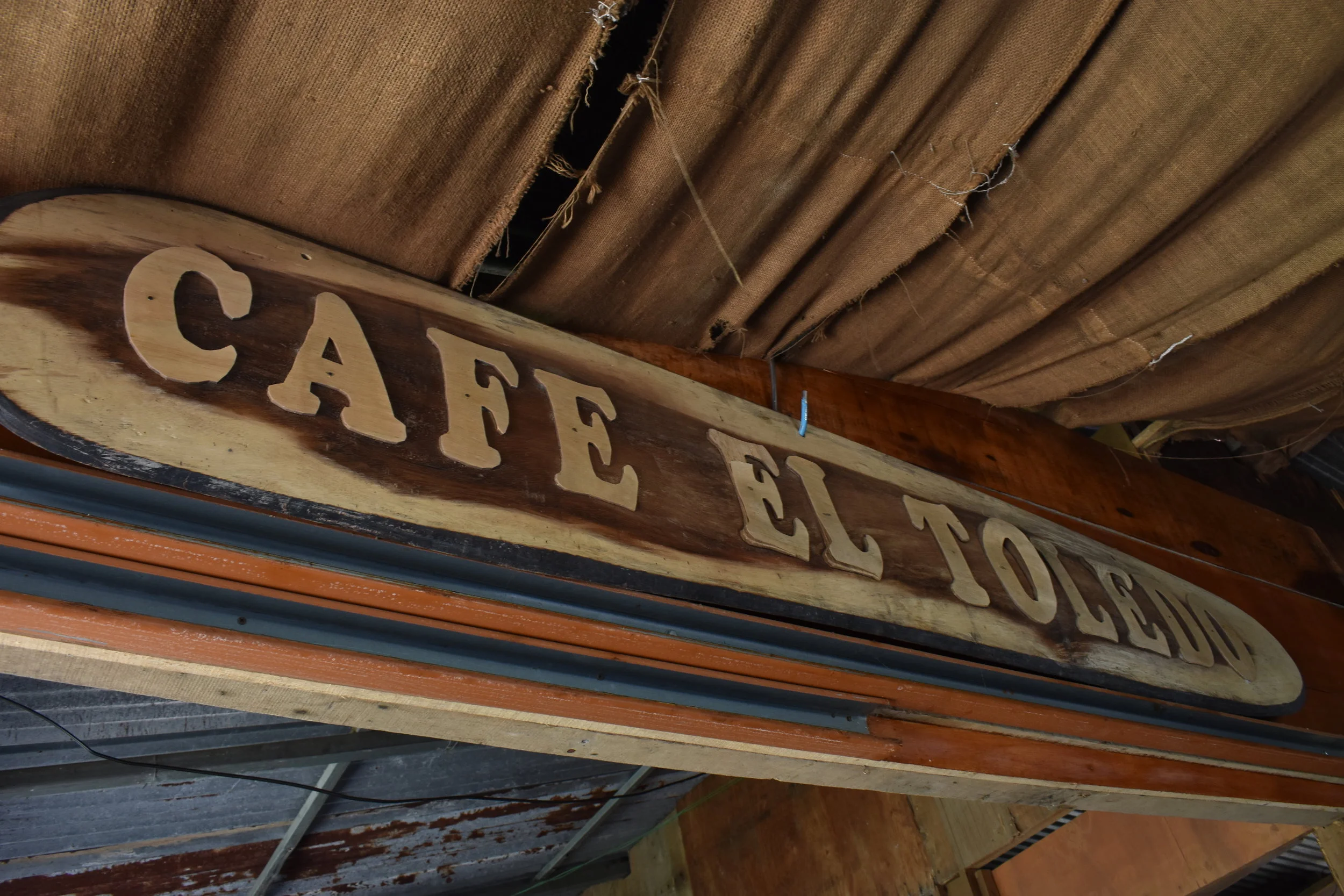
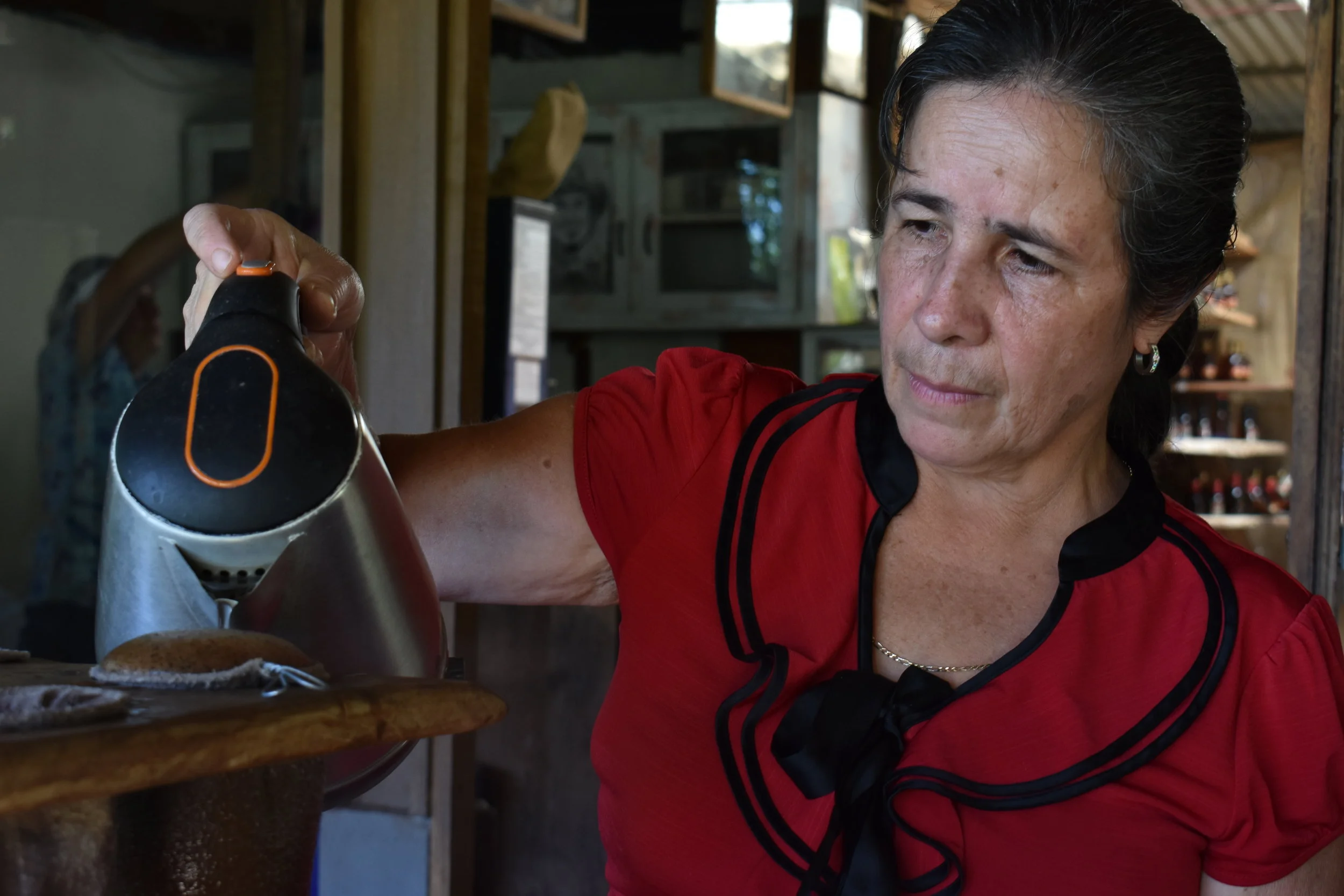
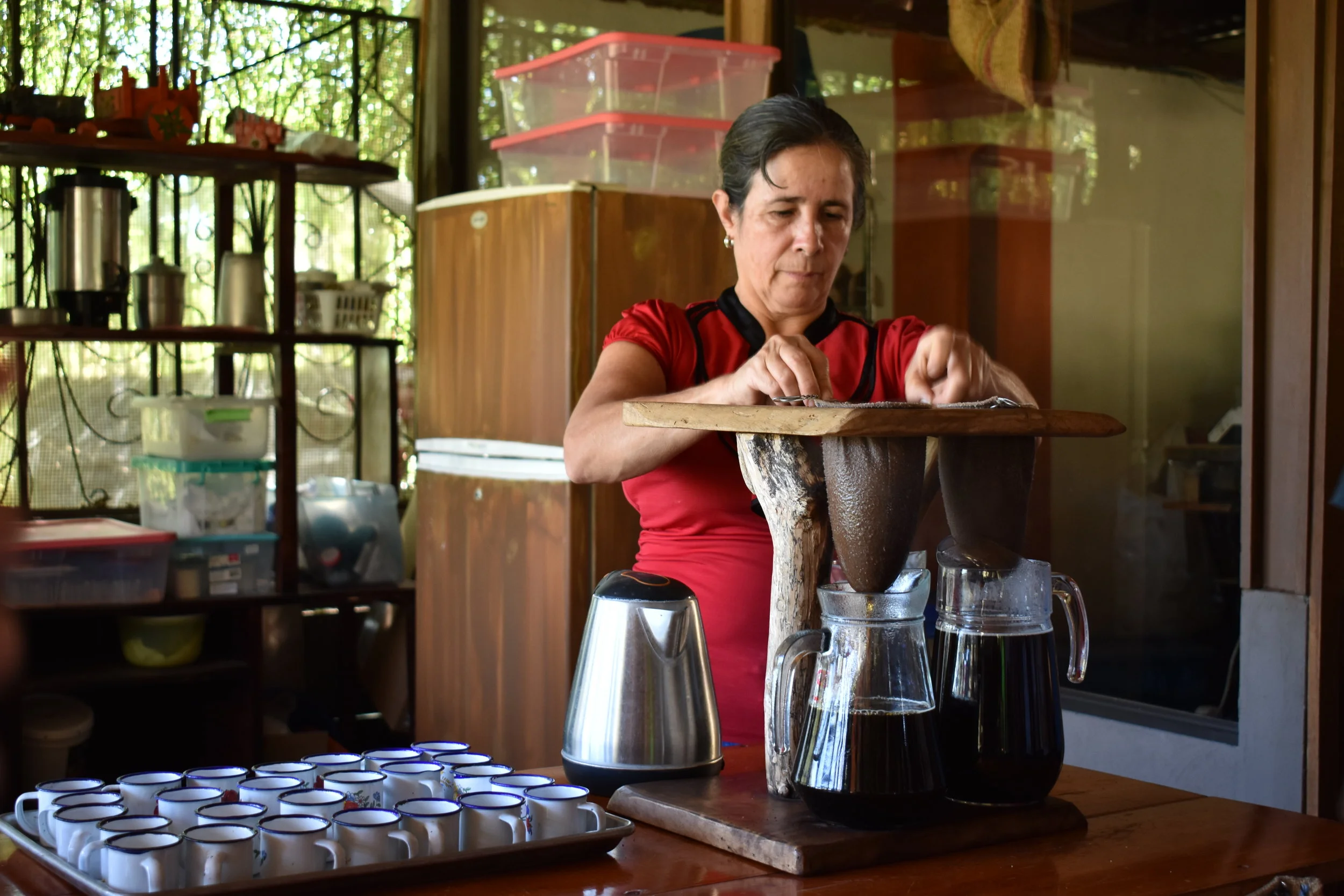
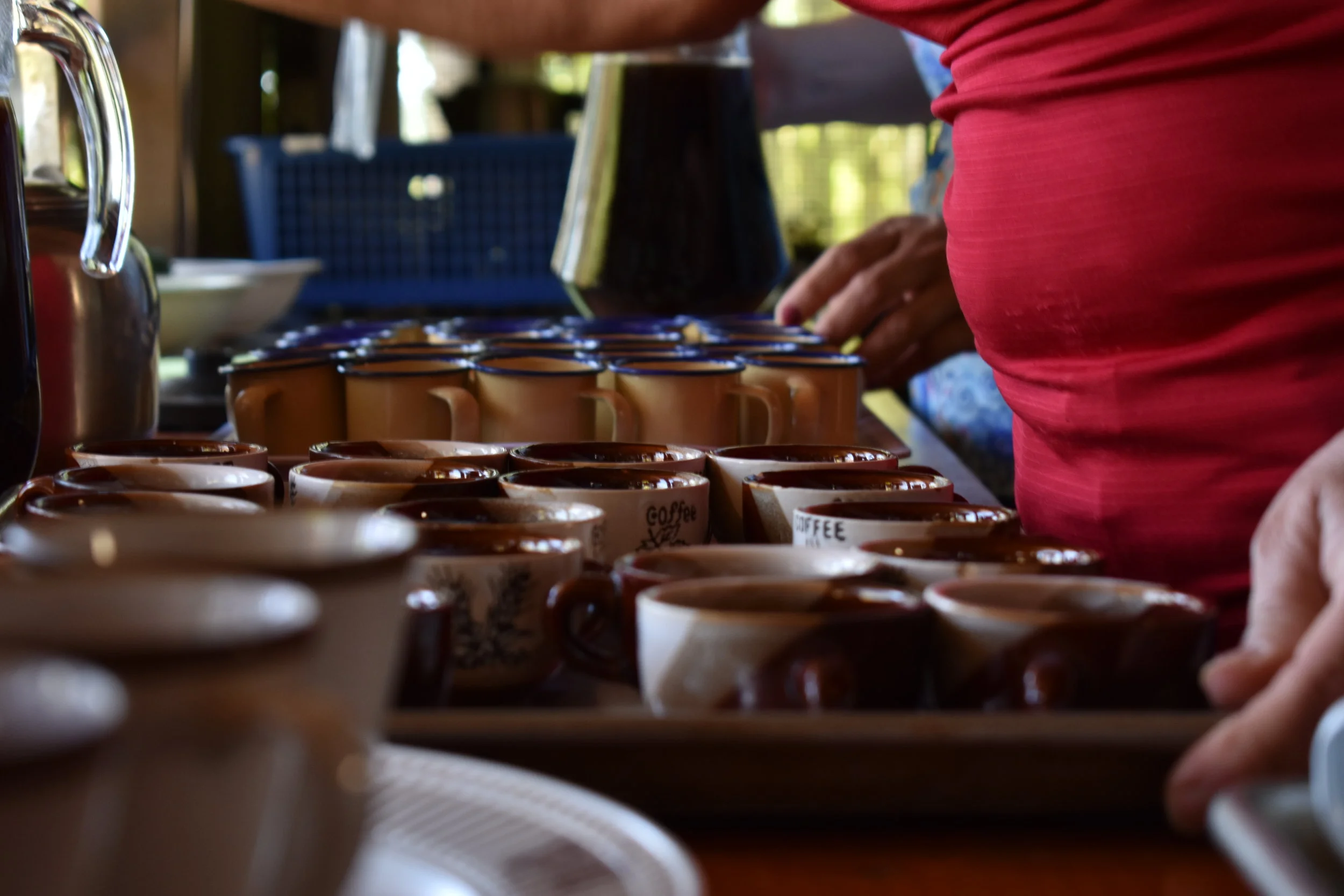
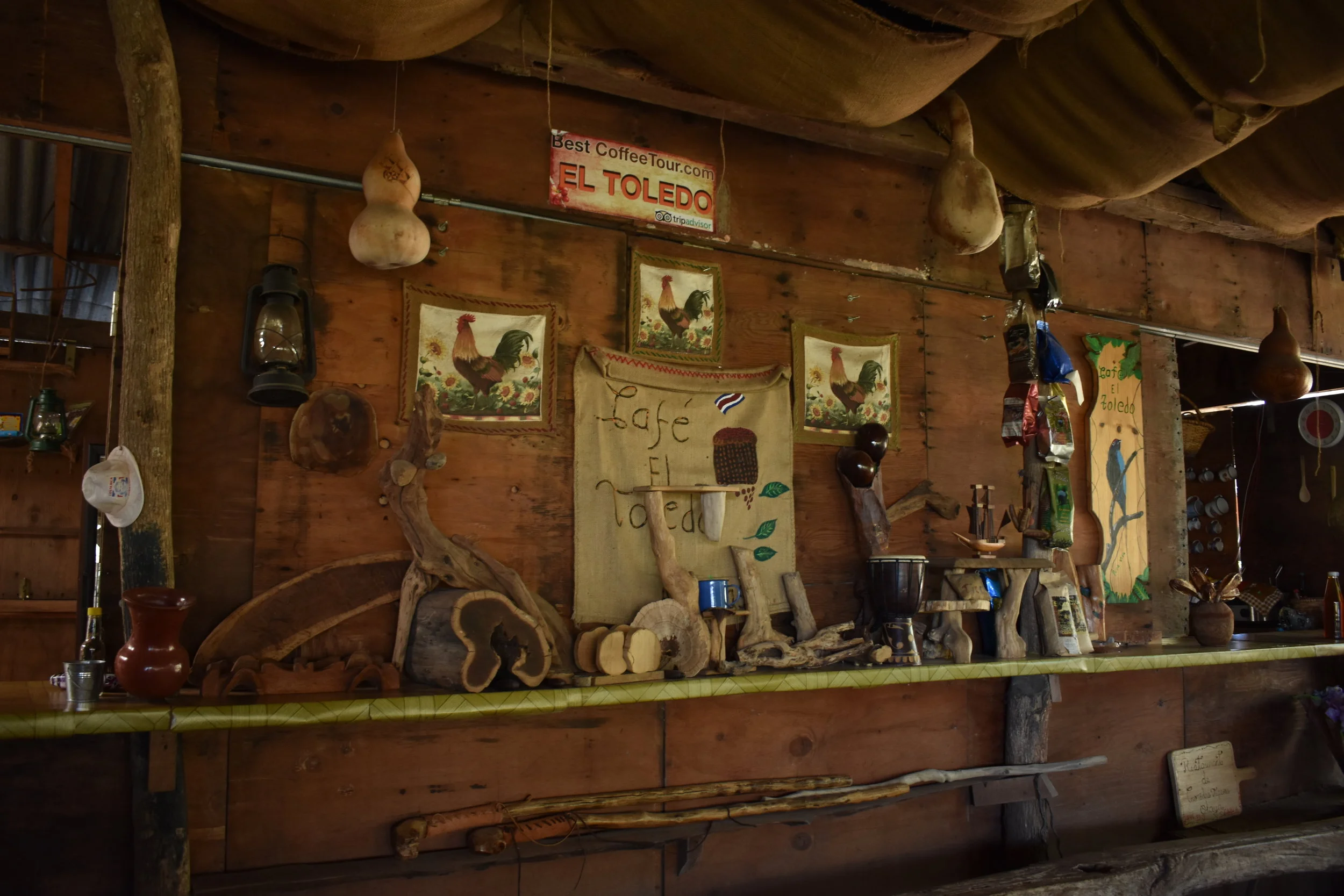
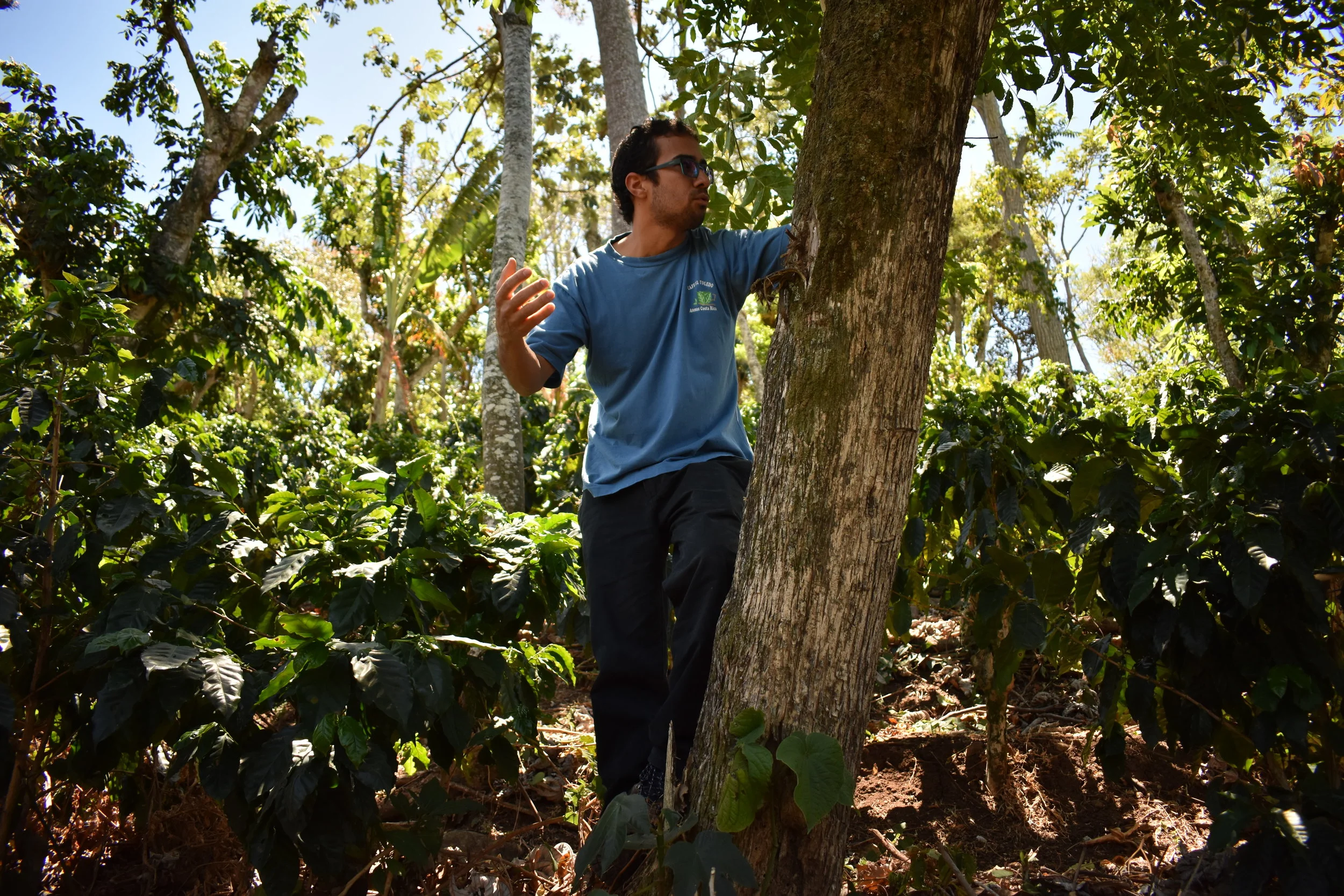
Slideshow photos by Rachael Durand
El Toledo uses the coffee berries to make a slew of uncommon coffee products. First and foremost, Calderón’s farm ferments coffee berries and makes coffee wine.
The farm has also tried its hand at producing coffee juice from squeezing fresh berries. Calderón said the process of making coffee juice is cheaper than making ground coffee to brew, but they no longer do it because the local market did not receive it well.
The fresh coffee berries are edible naturally and are comparable to blueberries. The dehydrated berries can be ground up, rather than coffee beans, into a flour-like powder which can be used for baking in place of traditional flour.. Most farms throw these materials away, but Cafe El Toledo incorporated them into their business and local market.
Calderón said El Toledo formerly exported its organic coffee, but currently sells at local markets in Costa Rica. With less coffee in a smaller market, Cafe El Toledo’s business is much more effective compared to when it exported and had many competitors around the globe.
Conventional coffee is safer than organic coffee, but the chemicals used in production are not always safer than the organic process. With that in mind, Calderón maintains his organic production.
Cafe El Toledo is a family-owned business that was formerly a conventional coffee farm. Calderón said the farm made the switch over to organic farming when his father got sick from the chemicals used in the farming process.
“We value health after we lose it,” he said.
While many farms produce a lot of waste and feed into the myths behind organic farming, Cafe El Toledo and Calderón produce many types of coffee-based products, and they do it for the family.




